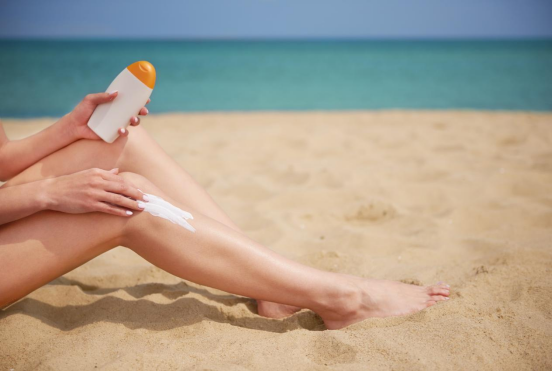
As consumers become progressively savvy about skincare, the discussion in between chemical and physical sunscreens continues to be a warm topic. While both deal vital protection against the sun's dangerous ultraviolet (UV) rays, physical sun blocks are usually admired for their mild yet efficient formula, making them a favored option for those with delicate or reactive skin. The trick to their success lies in their active components, which develop a physical obstacle on the skin to block out UV radiation. This post will delve into the world of physical sun blocks, concentrating on their crucial components: zinc oxide and titanium dioxide.
Unlike their chemical counterparts, which soak up UV radiation and transform it into heat, physical sunscreens work by sitting on top of the skin to create a guard that deflects and scatters both UVA and UVB rays. This system is why they are commonly described as "sunscreens." The primary advantage of this method is its immediate efficiency upon application and the lower probability of creating skin inflammation, as the components are not absorbed right into the skin.
One of the most well known active ingredient in the physical sunscreen household is Zinc Oxide. This giant mineral is distinct in its capacity to provide broad-spectrum defense, meaning it efficiently secures the skin against the complete range of UVA and UVB rays. UVA rays are accountable for early aging, consisting of creases and fine lines, while UVB rays are the primary reason for sunburn. By using comprehensive security versus both, zinc oxide plays a critical function in stopping sun damage and decreasing the risk of skin cancer.
Additionally, zinc oxide is renowned for its calming properties. It has been made use of for centuries to treat minor skin irritations, breakouts, and burns, a testament to its mild nature. This makes sunscreens created with zinc oxide a suitable choice for individuals with delicate skin, acne-prone skin, or problems like rosacea and eczema. Its non-comedogenic properties likewise suggest it is much less likely to clog pores, a typical issue for those with oily or mix skin.
The various other principal in the physical sunscreen classification is Titanium Dioxide. This normally happening mineral is an additional outstanding ingredient for producing a physical obstacle versus UV rays. It is extremely effective at mirroring and scattering UVB radiation, providing durable security against sunburn. While it offers great defense across the UVB range, it is usually thought about much less reliable versus long-wave UVA rays compared to zinc oxide.
For this reason, titanium dioxide is usually utilized in conjunction with zinc oxide in sun block formulations. This combination creates a collaborating effect, enhancing the overall broad-spectrum defense of the item. By leveraging the staminas of both active ingredients, formulators can create a sunscreen that uses thorough and reputable protection versus the sunlight's damaging rays. Like zinc oxide, titanium dioxide is likewise gentle on the skin and is a suitable option for those with sensitive or quickly aggravated skin.
In the last few years, advancements in formula modern technology have dealt with one of the physical sunscreen ingredients initial drawbacks of physical sunscreens: the thick, white cast they would frequently leave on the skin. Modern formulations currently make use of pulverized or nano-sized particles of zinc oxide and titanium dioxide, which enables a more cosmetically stylish application without jeopardizing their protective abilities. This means you can enjoy the mild, efficient defense of a physical sun block without the telltale white residue.
To conclude, physical sun blocks supply a trusted and gentle means to safeguard your skin from the sun. Their celebrity components, zinc oxide and titanium dioxide, work in consistency to produce a physical guard that disperses dangerous UVA and UVB rays. With their outstanding security profile and suitability for all skin types, specifically delicate skin, physical sun blocks are a formidable force in the fight versus sun damage. The next time you are Browse the sun block aisle, think about the powerful, safety, and skin-loving benefits of a physical solution.